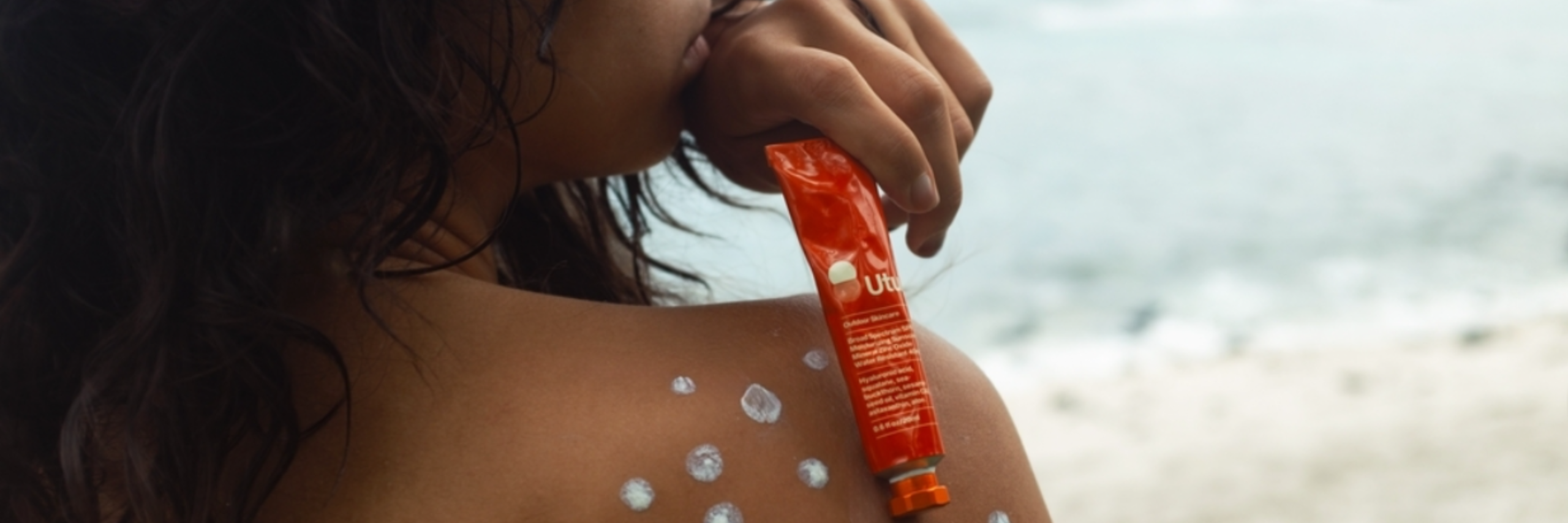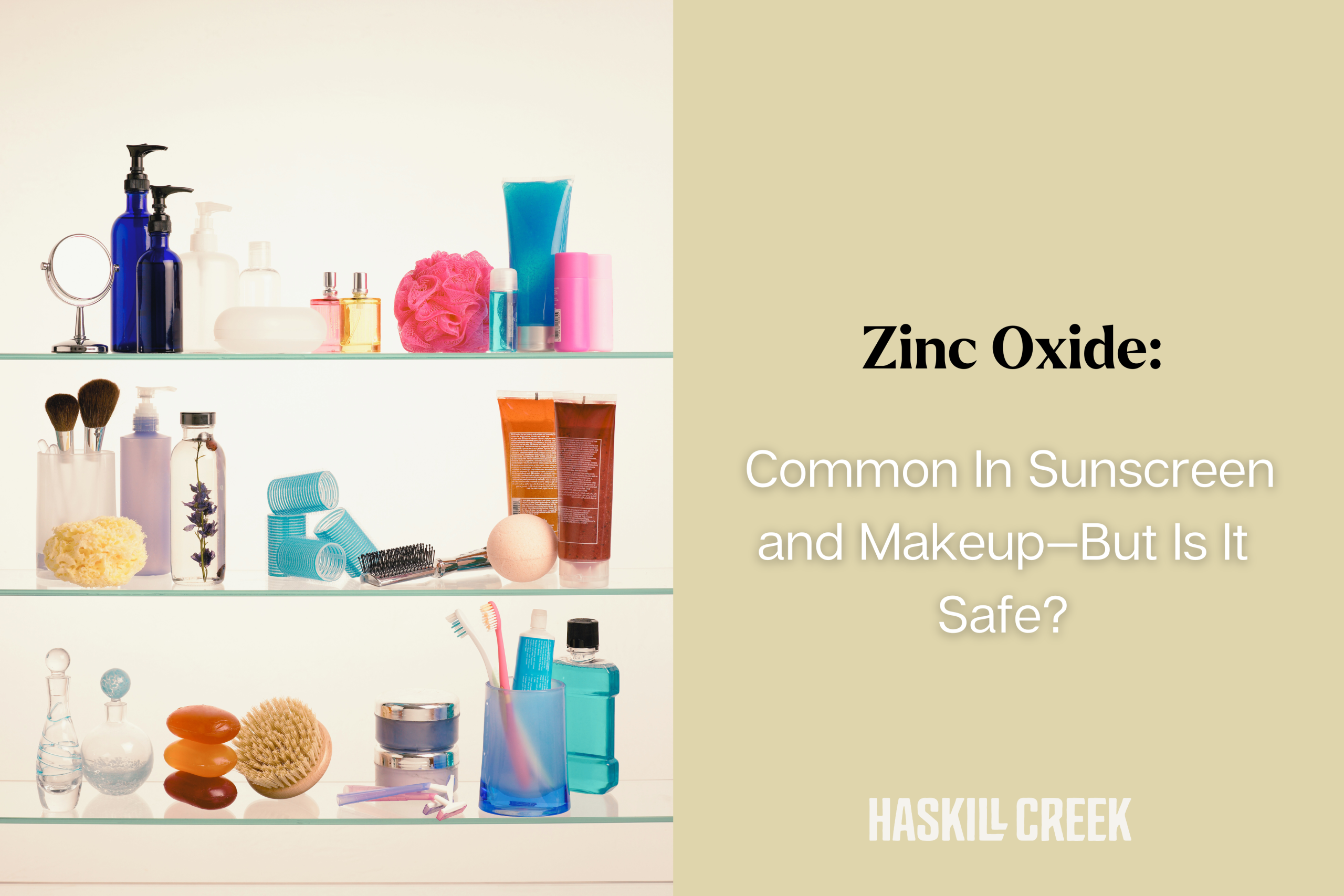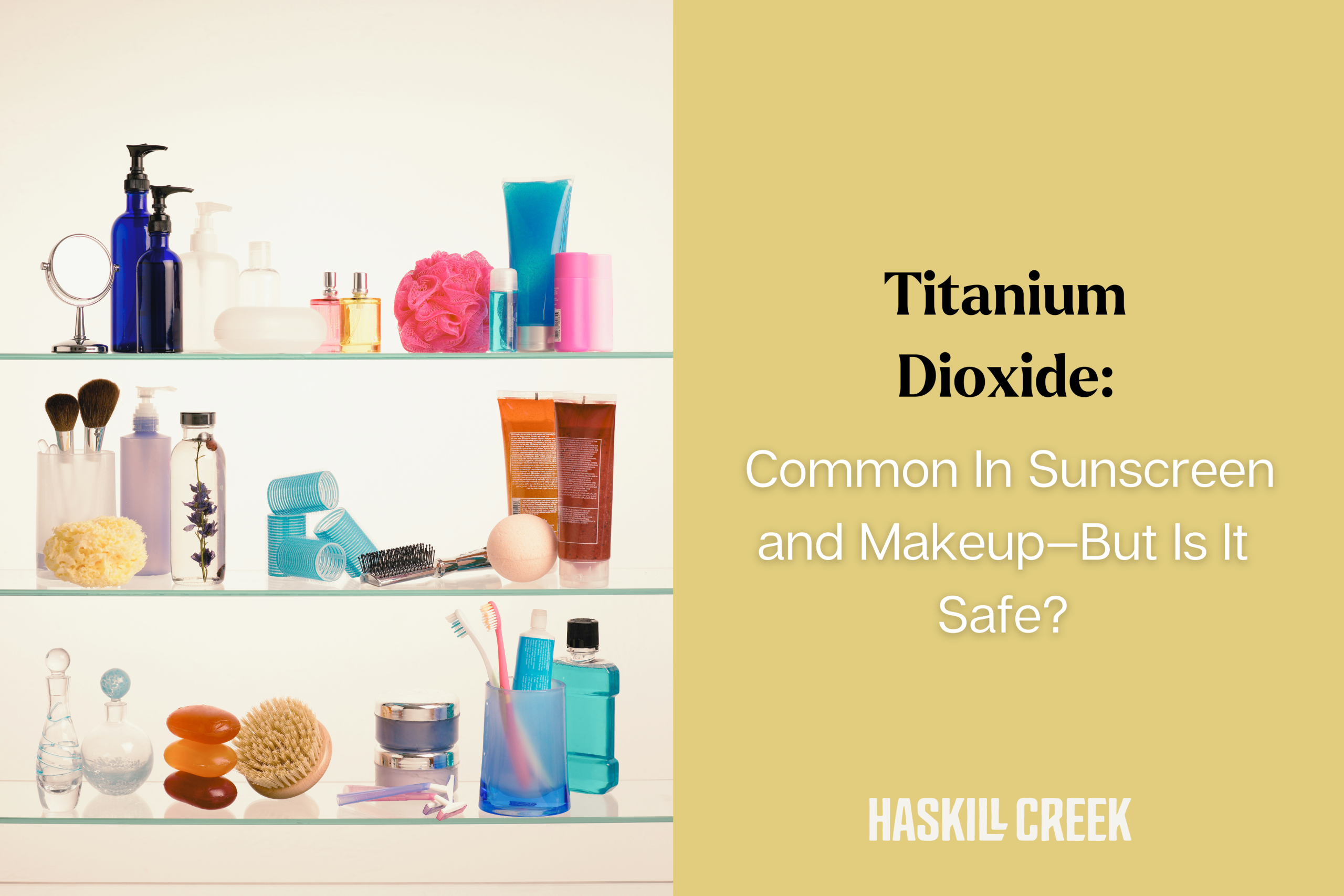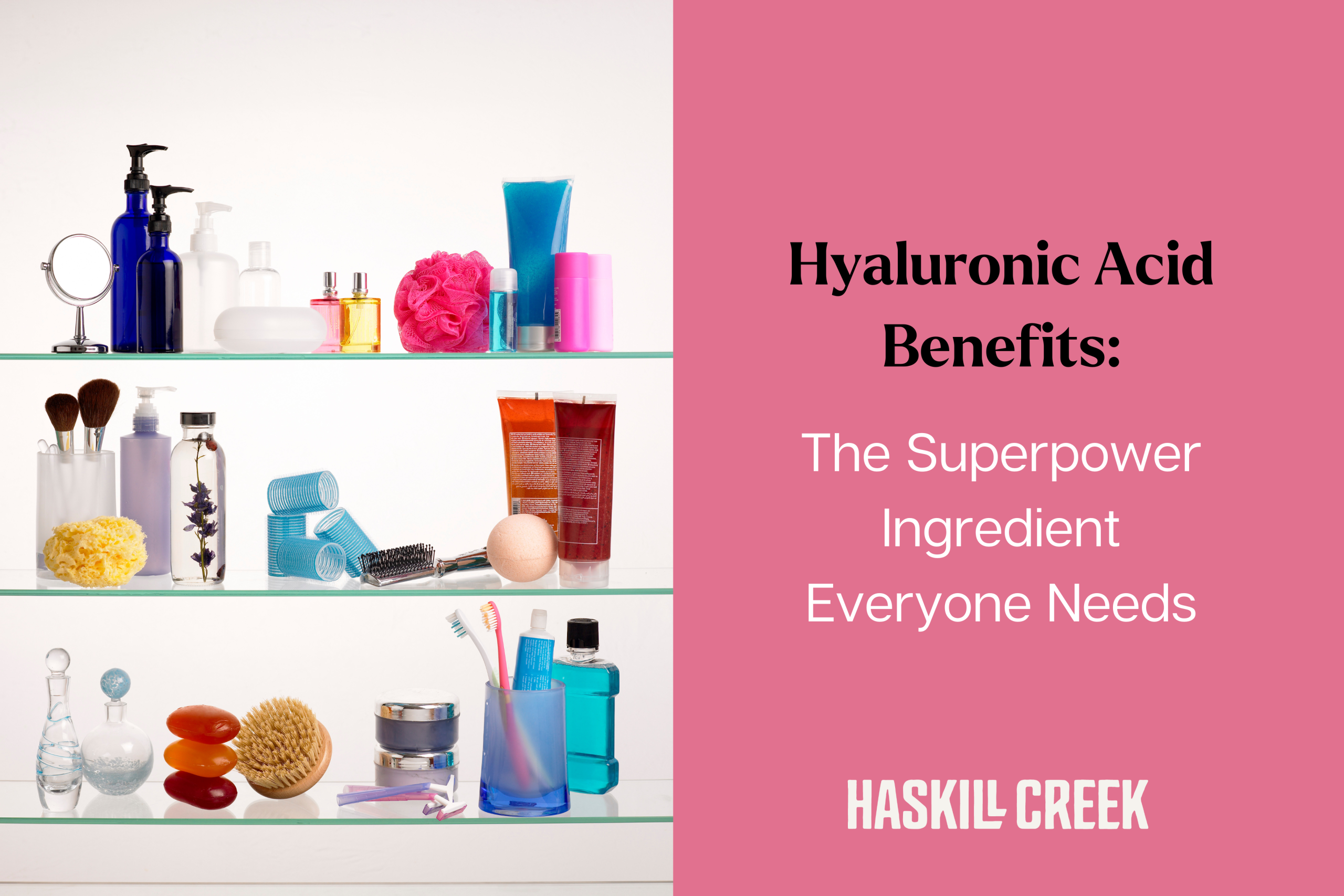5 Pro-Tips for Smarter Sunscreen Use

This might not be the most “on-brand” way to kick off a pro-sunscreen article, but here goes: I love a good tan. I know I probably shouldn't say that—but there's just something about a little sun-kissed glow that makes me feel better. Maybe it’s a bit vain, maybe it’s partially science (vitamin D, endorphins, etc.), but honestly… even after all the research I’ve done, I’m probably not going to totally swear off a little summer color.
But what I am going to do… Get way more intentional about how I protect my skin—and my kids’. Just walking around town comes with more sun exposure than I ever thought about. I didn’t realize this:
UV exposure increases 6–10% for every 1,000 feet of elevation. Here in Whitefish, Montana (elevation just over 3,000 ft), that means we’re getting up to 33% more UV radiation than folks at sea level. 🔗
There are so many sunscreen options out there and they definitely are not all the same. So what should my go-tos be? How do I use it properly? Are there some key things I should be looking for?
To help set us all up on the most effective path to daily sunscreen use, we spoke with Richard Welch, sunscreen expert and founder of Utu Sunscreen, to give us his pro-tips on which sunscreens to pick, when to wear them and how to safely enjoy life in the sun. Because as Richard believes, "sunscreen is actually the most important skincare you can ever own”.
The 5 Pro-Tips
Pro-Tip #1: Wear Broad Spectrum SPF 30–50 Sunscreen Every Day
“People think sunscreen is just for summer or when you’re on the beach. But UVA is hitting you through your windshield in the middle of January.”
– Richard Welch, Utu founder
Even on cloudy days or during winter, UV rays still reach your skin. In fact, up to 80% of UVA rays can penetrate clouds, and snow reflects up to 80% of UV light back onto your face. That’s why wearing sunscreen year-round in Whitefish is essential.🔗 There are two types of UV rays, UVA rays which cause long-term skin aging and penetrate glass and UVB rays which cause sunburn and contribute to skin cancer. Broad spectrum means you're covered against both.🔗
Why 30-50 SPF? SPF—short for Sun Protection Factor—measures how well a sunscreen protects your skin from UVB rays. Studies show that🔗:
-
SPF 30 blocks ~97% of UVB rays
-
SPF 50 blocks ~98%
-
Anything below (SPF 15) isn’t really enough and above (SPF100) only adds incremental ( ~1%) protection and may create a false sense of security. This is because reapplication is critical.
Worth Noting: You can still get vitamin D while wearing sunscreen—studies show that incidental sun exposure provides sufficient vitamin D for most people. 🔗
Pro-Tip #2: Match Your Sunscreen to Your Day
“We built Utu to be something you’d actually want to wear hiking, surfing, or just walking the dog. It’s about function meeting lifestyle.” – Richard Welch
Sunscreen should fit your *real* life. That lightweight, sheer facial sunscreen might be great for errands—but won’t cut it if you're skiing, sweating, or swimming. Choose a water-resistant balm for active outdoor days, a hydrating mineral cream for daily wear, and keep a stick in your bag or glovebox for on-the-go reapplication (hands, ears, neck!).
The right sunscreen makes you more likely to use it. Pick a few that match your routine—like shoes, you probably need more than one pair.
**Scroll to the bottom** for our curated recs based on activity and skin type.
Pro-Tip #3: Choose Non-Nano Zinc Oxide When You Can
“Non-nano zinc’s been tested the most. It’s stable, effective, and you’re not dealing with systemic absorption or disruption like with some of the chemical filters.”
– Richard Welch
A good mineral sunscreen with non-nano zinc oxide are our go-to because they:
-
Sit on the surface of the skin and reflect UV rays
-
Vs. absorbing into your skin and ultimately bloodstream, like some chemical filters do.
-
-
They're proven to be gentle, effective and non-irritating
-
Have a strong safety record.
-
Are considered “reef safe”
Some sunscreens also contain titanium dioxide, which is also generally considered safe when used topically in non-nano form.
Scroll to the P.S. for our thoughts on why we pick minerals over sunscreens that contain chemical filters like oxybenzone, homosalate, and octocrylene.
Pro-Tip #4: Pick Lotions and Balms Over Sprays (Usually)
"Aerosols have their place, especially for getting wiggly kids covered, but creams and balms just give you better control and coverage. You’re not losing half the product to the air."
– Richard Welch
Lotions and balms provide more coverage and better skin adhesion, making them ideal for everyday use. Sticks are great for precision—think noses, cheeks, and hands-on-kids.
What’s wrong with sprays? Sprays are convenient—especially if your kid is mid-sprint or covered in sand—but they come with some noteworthy trade-offs:
-
Spotty Protection: Apply unevenly and don’t provide enough SPF unless heavily saturated. 🔗
-
Inhalation Risk: Spraying chemical filters—or even zinc and titanium dioxide—can introduce them into your lungs. Not ideal. 🔗
-
Environmental Impact: The mist can drift, settle into soil or oceans, and harm marine ecosystems. 🔗
-
Not cost effective: Watch next time you see 80% of that spray float into the air 😐
Pro-Tip #5: Reapply Often (Even With Makeup) -Every 2 Hours Is Ideal
“Reapplying is key—especially if you’re sweating, in water, or touching your face a lot. Most people just forget, and that’s where sunscreen fails.”
– Richard Welch
Every 2 hours sounds unrealistic and maybe it is, but the point is, you need to reapply way more often than you think. SPF wears off—whether from sweat, swimming, toweling off, rubbing your face, or simply just time.
Wearing makeup? Look for SPF setting powders, mists, or gentle reapplication balms designed to go on top of cosmetics.
I keep a small tube of sunscreen in my car. A quick swipe on the hands or cheeks before errands or driving makes a difference.
So next time you're not able to get to Haskill Creek and need to grab a sunscreen—or you're wondering if it’s time to reapply—think back to these pro-tips. Because protecting your skin doesn’t have to be complicated. And as Utu puts it best: “Sunshine looks great on you.” Just make sure you’re wearing it wisely.
P.S Our Favorite Sunscreens (and Why We Like Them)
We’ve curated a sunscreen collection at Haskill Creek that reflects our values—ingredient transparency, effectiveness, safety, and versatility. Here are a few standout brands we carry and why we love them:
-
Utu Sunscreen: Developed by founder Richard Welch with a performance-first mindset. 100% non-nano zinc oxide, functional textures, no fragrance, and designed to be worn all day. It's our go-to for outdoor adventures.
-
Suntegrity: Mineral-based formulas that combine skincare benefits and clean ingredients. Many tinted options, and a top pick for makeup wearers.
-
OneSkin: Science-backed and developed to both protect from UV rays and improve skin health. Their topical longevity approach is unique.
-
ThinkSport / ThinkBaby: Affordable, effective, and EWG-verified mineral sunscreens that are easy to apply and great for sensitive skin and kids.
-
Kinfield: A newer brand we love for its fun, functional, and sustainable twist on outdoor skin care—plus it’s safe for sensitive skin.
-
Attitude: Canadian brand with non-nano zinc-based formulas and eco-friendly packaging. Broad spectrum and budget-friendly.
-
Augustinus Bader: A luxury pick—yes, pricey, but loved for its skincare-meets-sunscreen benefits and premium ingredients. Contains titanium dioxide.
Want a handy reference? Download our Quick Sunscreen Guide to find the right product for your skin type, lifestyle, and preferences.
P.S.S. – A Word on Chemical Ingredients, the Reef, and Labels
Any attempt by a brand to minimize its impact on our health and the environment is worth giving credit to—because, frankly, many don’t even try.
Chemical Ingredients
We all know there are chemicals in products that probably shouldn’t go on our skin or in our bodies. When it comes to chemical sunscreen ingredients, here are five of the most commonly flagged UV filters🔗—either for potential health or environmental concerns:
-
Oxybenzone – Linked to endocrine disruption (in animals); found in blood; banned in Hawaii
-
Octinoxate – Hormone-disrupting effects (animal studies); banned in Hawaii
-
Homosalate – Accumulates in the body; under FDA review
-
Octocrylene – Can degrade into benzophenone; potential irritant
-
Avobenzone – Unstable alone; needs stabilizers to prevent breakdown in sunlight
To be fully transparent:
-
These concerns are based mostly on animal studies or cell-based lab tests, often at much higher concentrations than you’d find in normal sunscreen use.
-
In humans, these ingredients are absorbed systemically—they’ve been found in blood, urine, breast milk, and even amniotic fluid.🔗
-
However, there’s no conclusive evidence that they disrupt hormones in humans at real-world doses.🔗
That’s why the FDA hasn’t banned them outright—but has called for more long-term safety data.
“There’s animal data that shows some of these chemical filters can cause endocrine disruption, but that’s not the same as seeing those effects in humans. The problem is we just don’t have long-term human studies. So when you’ve got ingredients that are systemically absorbed, and we don’t fully understand the long-term impact, I think it makes sense to be cautious.”
— Richard Welch, UTU Founder
“Reef Safe” & “Hawaii 104 Compliant”: What Do They Really Mean?
Sunscreen bottles often shout out terms like “reef-safe” or “Hawaii 104 compliant.” But what are these labels actually telling you—and what are they not?
“Reef Safe”
Pros:
-
Usually means the sunscreen does not contain oxybenzone or octinoxate—two UV filters shown to contribute to coral bleaching.
-
A signal that the brand is at least attempting to be environmentally conscious.
Cons:
-
Not a regulated term—there’s no official standard for what qualifies.
-
Products can still contain other ingredients harmful to marine life, like octocrylene, homosalate, or certain preservatives.
-
Doesn’t mean the product is safe for you—just that it avoids a couple of marine-damaging ingredients.
“Hawaii Act 104 Compliant”
Pros:
-
Means the sunscreen complies with Hawaii’s legal ban on sunscreens containing oxybenzone and octinoxate (effective Jan 1, 2021).🔗
-
Based on scientific evidence showing these two ingredients harm coral reef systems.
Cons:
-
Still allows other chemical UV filters with questionable environmental and health impacts.
-
Only addresses two ingredients, so the overall formula may not be reef- or body-friendly.
At Haskill Creek, we’re not here to scare you—any sunscreen is better than none. But when there are mineral sunscreens that are proven effective, safe for your body, and better for the planet?
That’s the kind of upgrade we’re here to help you make.

Sign up for our newsletter!
Join to get the Haskill Newsletter and be the first to learn about new products, events, and other goings-on at Haskill Creek!









